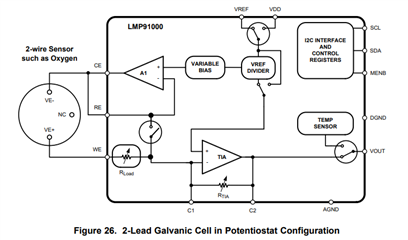Hi Experts,
Seeking your assistance please.
Customer has a two -electrode alcohol sensor dart, wanted to connect it to the LMP91000 potentiostat.
As stated in the documentation, it can be connected in 3-LEAD mode, for this you also need to scrape Reference Electrode and Control Electrode. I attach to the working electrode to a +, and minus to the reference and control as in Datasheet.
Programmatically, they can change the parameters of op_mode, bias, ref_source, and so on, what values need to be selected for each mode? For example, what amplification or cooperation we need? What internal support voltage? Or is it better to connect this type of sensors in 2-LEAD GALVANIC CELL?
For your assistance.
73,
Archie A.
16mm_breath_alcohol_sensor_product_datasheet.pdf



